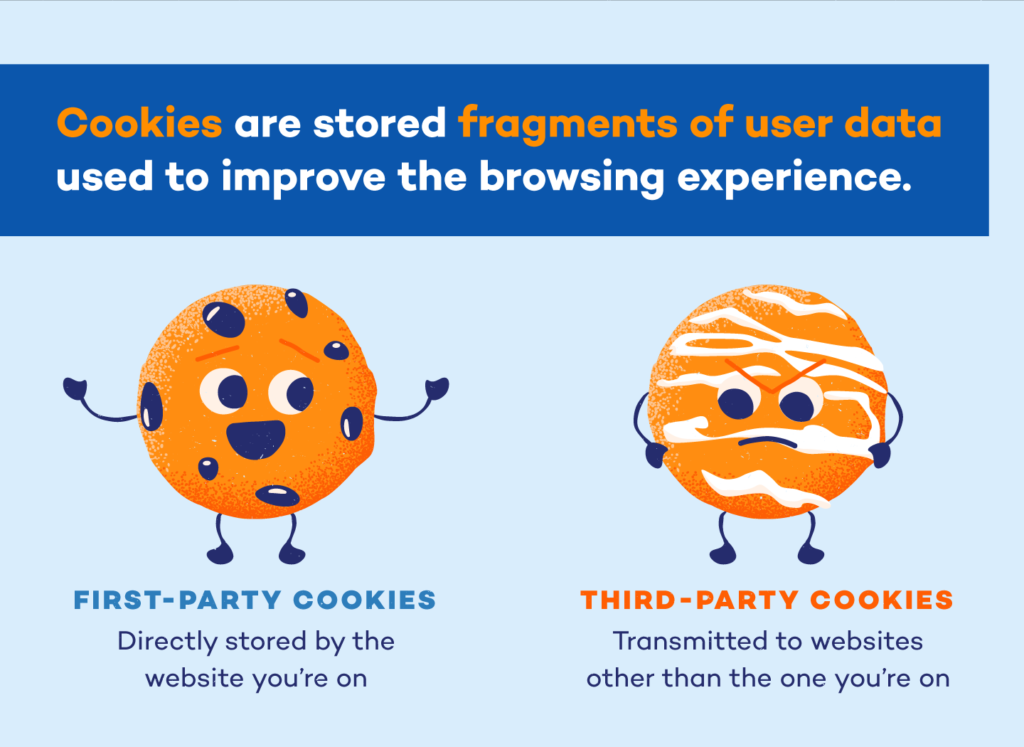What Are Cookies?
For years, websites have relied on cookies to track visitors, enhance user experience and collect data that helps target personalised ads. Cookies can be categorised as either first party or third-party:
First-party cookies are created and stored by the website the user is visiting. They are essential for basic website functionality as they remember user preferences, login information, shopping cart contents, etc.
Third-party cookies are created and placed by a different company than the website owner. These third-party cookies can track users across different websites, raising privacy and security concerns.

Privacy Concerns
In response to growing privacy concerns, Google announced in 2020 that it will be following browser rivals Safari and Firefox by phasing out third-party cookies. Google has already begun this process by disabling third-party cookies for 1% of Chrome users in Q1 2024, with complete phase out delayed from Q3 2024 to early 2025.

This presents a significant challenge for marketers, as tracking and measuring digital campaign performance will become more difficult. Marketers will need to explore new methods of data collection and user tracking, one of these being Server-Side Tracking.
Server-Side Tracking
Serve-Side Tracking is an alternative to traditional data collection, where data processing and storage occurs on a server, rather than in the user’s browser. This implementation not only is compliant with data collection security standards, but also improves website performance as the processing load is shifted from the user to the server.

Benefits of Server-Side Tracking
Tracking users has become increasingly challenging over the years, and Google phasing out third-party cookies is just one of the challenges that will make it even harder for Marketers to report on campaign effectiveness. Implementing server-side tracking will address many of the challenges we’ve been seeing in the industry, such as:
- Ad Blockers: Server-side tracking mitigates the impact of ad blockers, which prevent tracking codes from loading on the client side. By processing data on the server, marketers can bypass ad blockers.
- Faster Page Load Times: There are no HTTP requests, so requests are sent directly to your server. This cuts load times as it directly communicates with third party platforms such as Google Ads.
- JavaScript Errors: Client-side tracking is susceptible to JavaScript errors as a result of browser incompatibilities, conflicts with other scripts, and network issues. Server-side tracking removes these problems.
- Cookie Expiration: Cookies can expire or be cleared by users, leading to lost data. Server-side tracking removes this issue by storing data on the server.
- Better Attribution: Server-side tracking provides a more accurate method for attribution. We tend to see ‘Direct’ and ‘Referral’ traffic for clients decreasing as a result of the implementation.
- Privacy Regulations: Lack of user consent can lead to gaps in conversion data, particularly with Consent Mode implemented on European websites recently due to new legislation from GDPR.
- Data Discrepancies: By handling data collection on the server, it reduces the discrepancies that often occur when different platforms process and report on data differently.
Why Transition Now?
It’s crucial to implement server-side tracking sooner rather than later. Businesses that delay this transition will face disruptions in data collection and lead to gaps in insights and analytics in reporting. By acting now, you will not only ensure a seamless transition when third-party deprecation occurs, but also gain a competitive edge through leveraging the many benefits of Server-side tracking.
How to Implement Server-Side Tracking
- Custom Implementation: For maximum flexibility and if you have considerable technical expertise, you can develop your own server-side tracking solution. This approach allows for tailored solutions that meet specific business needs but requires significant resources and expertise.
- Google Tag Manager + Google Cloud Platform: GTM offers built-in server-side tracking capabilities. By leveraging GTM and Google Cloud Platform, businesses can set up server-side tracking with relative ease, utilising Google’s robust infrastructure.
- Google Tag Manager + Third-Party Middleware Solutions: Solutions like stape.io simplify server-side tracking implementation with easier hosting setup, integrations, and more. These middleware solutions provide a user-friendly interface and comprehensive support for businesses looking to transition to server-side tracking. We recommend using this option when we implement Server Side Tagging for our clients – it has smaller room for error, with an affordable cost.
Do you need help with transitioning to Server-Side Tracking for your business? Contact us today to see how we can help your business take the next step in maximising your digital reporting capabilities.





